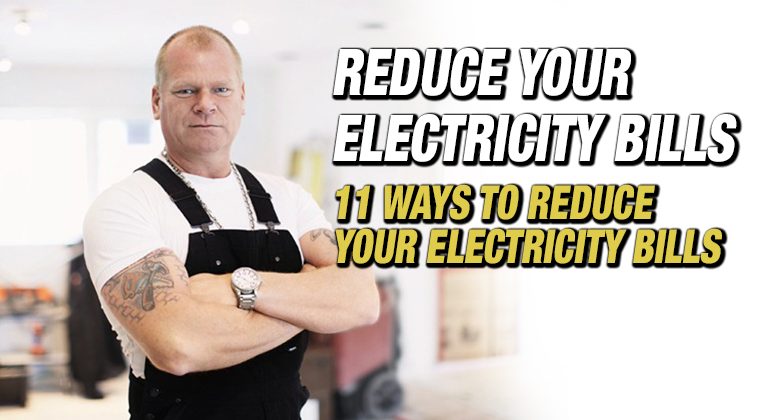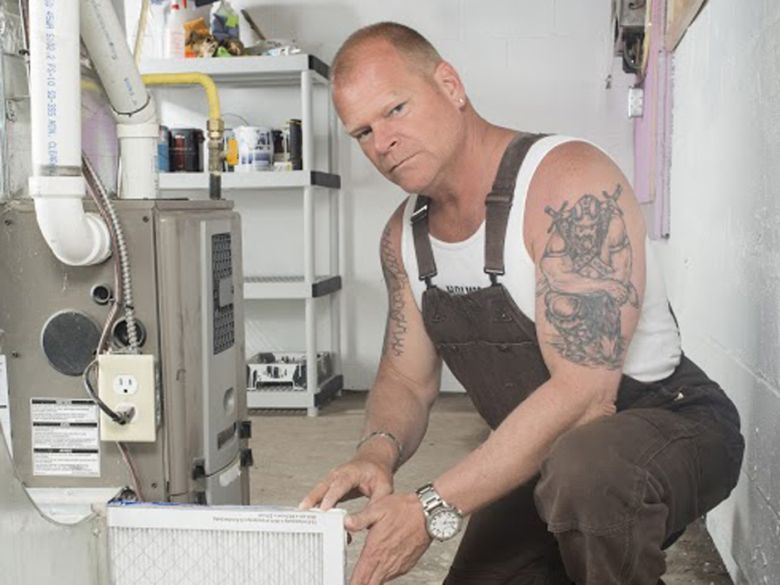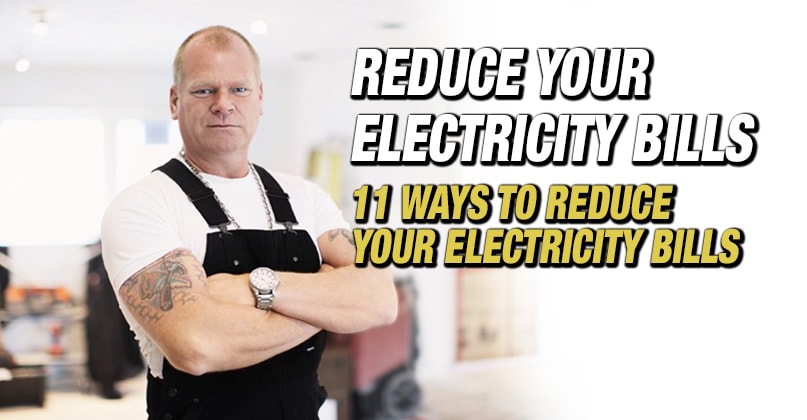Choosing the right siding for your home isn’t just about looks. I’ve said it a million times: PROTECT YOUR HOME FROM THE OUTSIDE IN. Siding is also about protection,...

How To Reduce Your Electricity Bill At Home
By Mike Holmes
Mike’s Advice / Home Safety & Maintenance
Friday, March 20th, 2020 @ 1:39am
If you have watched any of my shows, you know I love technology. I always say it, as more homeowners start to adopt the newest technology into their homes, the price of that technology starts to decrease until it becomes affordable to all homeowners. You may not remember, but it was many years ago that something as common as an air conditioning unit was a luxury that only a few could afford. So I’m going to give you 11 ways to cut down on your electricity bill.
11 Ways To Reduce Your Electric Bill
Energy use in America is doubling every 20 years. About half of your average cooling and heating costs make up approximately 50% of the average heating bill in most U.S. homes.
Here are some ways you can save on your monthly electricity bill:
11) Smart Thermostats Reduce Your Electricity Bill
Smart thermostats are taking North America by storm. They allow people to remotely control their home’s temperature via a tablet, PC, or smartphone. Through an online interface, users control the climate, view energy consumption in real-time, and set their A/C to turn off every time they leave the house.
If you’re like me and away from the home for most of the day, then a smart programmable thermostat might be your best option. You can set it to come on an hour before you arrive home or keep it off should you end up staying out later than you anticipated.
Even something as small as lowering your thermostat by three degrees while you’re at work can save you four percent on your heating costs. Why spend excess energy heating or cooling your home when nobody’s there to feel it?
10) Will Unplugging My Appliances Save Me Money?
Even when your electronics are turned off, they could still be drawing power, and increasing your energy costs. Up to 10% of your home’s electricity usage could come from this phantom power waste. In your bathroom, keep items like hair dryers and curlers unplugged when not in use. Devices that take a charge, like an electric shaver or toothbrush, only need about an hour to fully charge – and don’t need to be charged daily. Phantom power is costing most of us about $150 per year, and you can really cut down on that with just a few small changes around the house.
9) Reduce Your Electricity Bill With LEDs
Replace your incandescent and fluorescent bulbs with LED lights. They do cost more, but they last longer and will save you money in the long term. Wi-Fi enabled Smart LED bulbs can save you even more money. You can remotely access your lights using an app.
8) Smart Leak Detectors also Lower Your Electricity Bill
WI-Fi enables water sensors to allow you to view your water consumption. If your app shows that there is a leaky faucet, you can turn off your main water supply from your phone.
7) Energy Efficient Appliances Save You Money on Electricity Bill
Energy-efficient appliances are designed to reduce energy consumption, reduce their impact on the environment, and reduce your utility bills. Compared to average models, you can see upwards of $100 per year in savings. Look for Energy Star Rated appliances.
If you’re upgrading to energy-efficient appliances in the near future, don’t forget to factor in whole home surge protection.
6) How Do Solar Panels Reduce Your Electric Bill?
Paired with a well-sealed, energy-efficient home, solar panels can harness more energy than you need to power your home. Some municipalities even offer a buyback program for solar energy, where you can sell back your extra power for a credit. Solar panels have a big upfront cost but will pay off in the long run.
Even if solar panels aren’t in the budget today, make smarter choices that will allow you to add them in the future. Replace the roof before you add the panels, and work with a licensed installer to troubleshoot any potential issues. Obstructions like plumbing stacks or chimneys can get in the way, taking up the space you need for the panels.
5) Get An Energy Audit
An energy audit assesses how much energy your home consumes and helps you find solutions to make your home more efficient. It goes a long way to showing you specific trouble spots in your home that are energy sinks that if corrected, can lead to some monthly savings.
I really do recommend hiring a professional to do a full assessment of your home. Depending on the size of your home, it will likely cost you along the lines of $300-500, but they’ll be able to paint a much bigger picture of your home’s efficiency (or lack of it).
Once your assessment is complete, your auditor will provide you with a checklist of projects to complete that will help your home perform more efficiently. They could include items like replacing your windows, adding new insulation, or replacing some appliances.
4) Ceiling Fans Lower Your Energy Bills
Ceiling fans don’t make the air cooler. However, they draw warm air from the room upwards. Having a ceiling fan in your room may replace the need to turn on your air conditioning unit some days.
For me, the most important thing to keep in mind when buying a ceiling fan is noise. Some fans—especially the less expensive models—are so noisy when they operate you can’t hear yourself think. Try getting a good night’s sleep with one of them running—no way.
If your fan is installed the right way, and in the right place, it’s a great way to help you stay cool this summer. And it does that using only about as much electricity as a regular light bulb.
RELATED
3) Replace Your HVAC Filters

This is very simple. If your filter is clogged, your HVAC system will have to work harder to circulate air.
2) Reduce Your Air Conditioning Usage
The high cost of your electricity bill is closely tied to the amount of energy your A/C unit uses on an average day. In many households, the air conditioner usage can account for 60% of their total energy bill.
Many power providers offer incentives to not run your unit during peak hours, or they place power regulators on A/C units.
According to Toronto Hydro, the single most expensive household appliance to run is a central air conditioner.
1) Compressor Controllers
Think about how your air conditioning unit works. Typically, the temperature in your house will rise until it hits the maximum temperature allowed by the thermostat. The thermostat will then ask the compressor to run until the minimum temperature is achieved. When the A/C compressor first starts up, conditions are at their most efficient. As time goes on, however, the compressor continues to provide cooling but uses twice as much energy to achieve the same level of cooling as it did when it first started. This means that the harder your compressor works the more inefficient it becomes.
Compressor controllers are designed to maximize the efficiency of the A/C unit by limiting the compressor use when these unfavorable conditions arise. Installed between your current thermostat and A/C unit, they intercept commands from your thermostat and actively monitor and analyze the conditions of your A/C system. It uses the information it gathers to dynamically adjust the length of each cooling cycle in order to help the compressor operate under its most energy-efficient conditions. Smart, right?
These small little changes in compressor run time can have a big impact on your electricity bill because it helps to avoid energy spikes and inefficient run times. It’s a little bit like the cruise control in your car.









